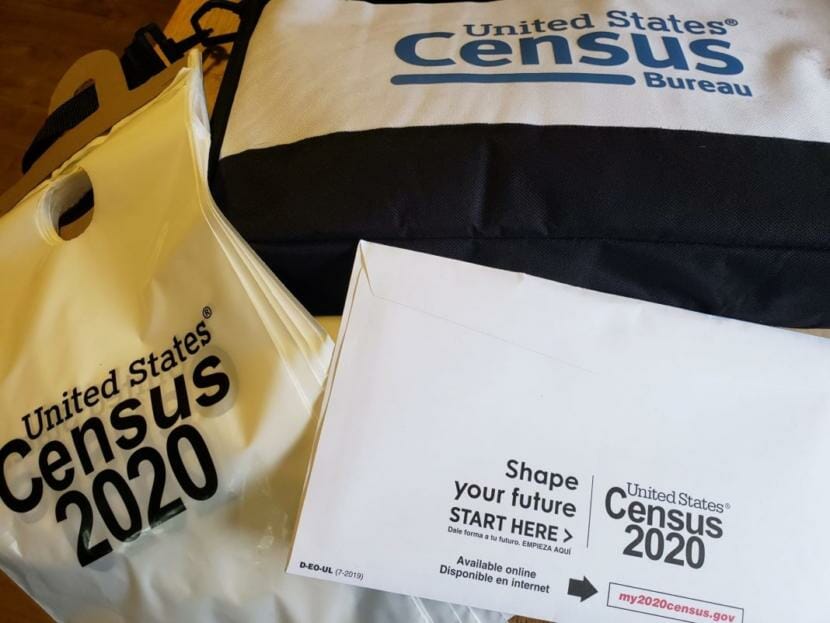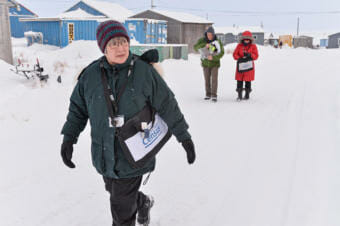
Unless there is further action by the courts, the counting in the U.S. Census is expected to end on Oct. 31.
Meanwhile, the Census Bureau reports that almost all Alaska households have been counted already. But the accuracy of that number is in question.
Andrew Smith spent the summer as a census taker in Palmer, Wasilla and near Glenallen.
“Sometimes it would surprise people,” he said, about approaching people on their property. “But I would always make it a good experience and say ‘Hi, I’m the census guy!’ Make myself known in a very polite and respectful way.”
Smith says he always kept a few things in mind. Wearing a safety vest, standing in the light, being aware and quickly reading the situation.
“If someone curses at you, you should just turn around,” Smith said. “There were a couple rough characters that were just not interested. And you just say ‘OK. Have a good day! Thank you! Bye bye!’”
Smith says he would also do quality control follow-up by phone for Alaskans who had already called, mailed in or filled out an online census form.
An aspiring musher from Oregon, Smith says he had lost his dog handling job during the pandemic. He later helped the Salvation Army with their relief efforts and struggled for a while this summer to find a place to stay.
“I still needed to make really some good income, and I thought this would be a good opportunity with my initial plan,” Smith says. “This was actually perfect timing.”

The nationwide census started in January in Toksook Bay, Alaska with what the Census Bureau calls their remote operation. Census takers went door-to-door in rural Alaska communities while the ice and snow made travel easier — and before residents got busy in the spring with subsistence and construction.
Then there was the self-response phase, when residents in larger Alaska communities and cities were encouraged to go online, call or mail in their own census form.
“The best response is the self-response because we want to make sure that the information comes from the person,” says Donald Bendz, spokesman for the Census Bureau.
Bendz says census takers went door-to-door again in Alaska to get data missing from the self-response phase, sometimes making multiple household visits.
“If we can’t get a hold of someone at a household, we talk to a neighbor,” Bendz says. “It’s called using a proxy, and that’s a standard operating procedure.”
According to the Census Bureau, just over 54 percent of Alaska households participated in the self-response phase, while just over 45 percent were counted by census takers.
“We are committed to getting 100-percent of the state counted,” Bendz says. “Right now [Sept. 29] being at 99.8 percent, we still have .2 percent to be done. So, we want to continue to encourage everyone who hasn’t responded to the census to do so.”
But some people are questioning those figures.
“The total response rate of well over 99 percent, I think, is misleading,” says Terri Ann Lowenthal, former staff director of the U.S House census oversight subcommittee.
Lowenthal says the percentage of completed housing units doesn’t say anything about the accuracy, quality, and completeness of the census.
“There are people who live in group facilities such as college dorms, nursing homes and so forth,” Lowenthal says. “There are people experiencing homelessness or living in shelters or an outdoor location. And then people in transitory locations such as RV parks, single room occupancy motels, and so forth.”
Lowenthal says those counts were delayed and disrupted by the pandemic.
She also says there are problems using a proxy.
“Your neighbors or landlord don’t always know everything about your household, even everybody who lives there who is not supposed to be living there, let’s say, and certainly may not know much about the demographic characteristics of the household members,” Lowenthal says.
In the 2010 census, Lowenthal says a proxy was used while counting almost a quarter of all households.
Census data is used to divide up the seats in the U.S. House of Representatives. It’s used in state redistricting. And it also determines where about $1.5 trillion in federal funding will be spent.
Jacqueline Pata, CEO of Tlingit Haida Regional Housing Authority, says that data is crucial for funding for things like tribal housing and transportation.
“In fact, it has been calculated that about $41,000 will come to your community if a typical household fills out their census form. And that’s critical money,” Pata says.
For now, the count goes on.
The Trump Administration has put an end-of-year deadline on reporting the data. Pata doesn’t think that’s enough time for the necessary quality control and double-checking, and she worries some Alaskans won’t be counted properly.
